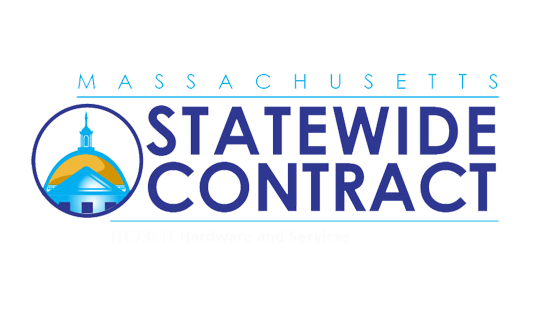We are the first to understand that nobody really likes reaching out for support. It’s time-consuming, for starters, and there’s something uniquely humbling about having to ask how to use the tools everyone relies on nowadays. However, there is nothing to be ashamed of when turning to help, especially if you can do so as effectively as possible.
BNMC Blog
Imagine a situation where your employees encounter a technology problem, but they don’t let it derail productivity for the rest of the workday. Normally, this would be the responsibility of your internal IT department, but if you’re fortunate enough to have one, you know they’re overworked and busy enough as is. When you need IT support and can’t turn to internal resources, outsourcing makes sense.
Even slight problems with your IT infrastructure can lead to costly downtime and setbacks you’d rather not have to deal with. Today, many IT-related problems can be addressed before they cause notable differences in your operations. All you need is access to a team of professionals like the folks at a managed service provider… like ours!
Empathy with an audience is at the core of any successful business venture. If you fail to empathize with those you serve, your products and services will not meet their needs, further jeopardizing your organization's future. As a managed service provider, we strive to understand our clients' needs, and we tend to do so by addressing issues before the client even knows they exist.
Businesses need a way to manage and maintain their technology, and if they don’t have internal IT departments, they might resort to outsourcing their IT outright. However, even businesses with technology professionals can benefit from working with a managed service provider. This approach, called co-managed IT, presents opportunities for considerable benefit.
Today’s cyberattacks are often conducted on a large scale, attacking institutions and organizations that hold a significant amount of sensitive user data. One such type of attack are leveraged against schools, colleges, and universities, many of which do not have the resources available to protect against them. Let’s go over what these types of student records do for hackers and why they are so highly valued.
In any business, IT-related expenses can be the most volatile, making them unpredictable and prone to swelling unexpectedly. As a result, many businesses are in a lose-lose situation: they can lose potential income by not keeping their essential solutions maintained and up-to-date, and they are prone to more frequent, inflated payments to have their issues resolved as they appear. For today’s tip, we’ll be going over how a managed IT service agreement can put a stop to this.
One of the best things about information technology today is that it is frequently improved. However, this improvement makes it crucial that you keep up with these changes. A managed service provider can greatly assist you with these procurement needs. Here, in part five of our managed service value series, we’ll discuss how invaluable this assistance can be.
There are many business processes that require an experienced touch… experience that you may not personally have. In this case, you’d typically call in someone who does. Why should your technology be any different? In part two of our five-part series, we’re examining how a managed service provider can serve as a valued consultant for your business’ needs.
Business owners know just how costly downtime can be. If your business suffers from technology problems, and your staff isn’t able to properly do their job, then you could be spending a whole lot of money with little or no reward. There is a solution to mitigate technology problems, and we will discuss every aspect of it in this five-part series. In part one, today, we will talk about how proactiveness is the proper approach to business technology.
When it comes to operating a business, there are really only two ways that one can do so… either one acts proactively with their business matters, or they tend to be reactive in their approach. Naturally, one method has shown to be far more effective than the other. Today, we’ll explore the features of each to figure out which will work best for you (spoiler alert: it’s going to be the proactive approach).
Managed Services provide endless benefits to any business, no matter the size. Having a “Fix it when it breaks” attitude is an unrealistic way to run your business in an era that is so heavily technology dependant. Today we dive into the many reasons a Managed Service Provider (MSP) can leverage your investment.
We’ve long accepted that, as an IT provider, there are a lot of stereotypes about what we can do and how we do it. Yet, just because we’ve accepted it, doesn’t mean we aren’t going to do anything about it. That’s why we wanted to use this blog post to clear up a few misconceptions about the nature of IT services.
Do you understand what a managed service provider does for businesses just like yours? Some of what a MSP does can be a bit confusing if it’s not explained properly, leading to misinformation spreading. We wanted to take a moment to clear up what it is we help our clients with, as well as what we can accomplish for your business.
As a managed service provider, we’re naturally going to be a little biased when comparing the positives and negatives between an in-house IT team and an outsourced approach. However, each has its benefits in the right situations, and each can have its downsides. Today, we’ll discuss each to establish which is the better choice for your situation.
How does your organization manage its mission-critical technology solutions? We know that most small businesses have some sort of trouble with this topic, either due to budget constraints or a lack of personnel. Either way, we know that there is a better way to manage your business’ technology, and it’s all thanks to an approach called managed IT services.
As a business owner, you have plenty to worry about, and your technology doesn’t do you any favors. It’s difficult to oversee the responsibilities of managing technology like workstations, server units, and mobile devices, alongside the ordinary demands of your job. What a lot of organizations don’t realize is that they can improve operations and make their jobs easier by outsourcing the responsibility of technology management to IT professionals.




















